Water in your basement can be a serious problem. If left unchecked, it can lead to mold, mildew, and structural damage. And, if the water is coming in from an exterior wall, it can be tough to figure out how to stop it.
In this blog post, we’ll show you how to fix a leaky basement wall from the outside so you can keep your basement dry all year round.
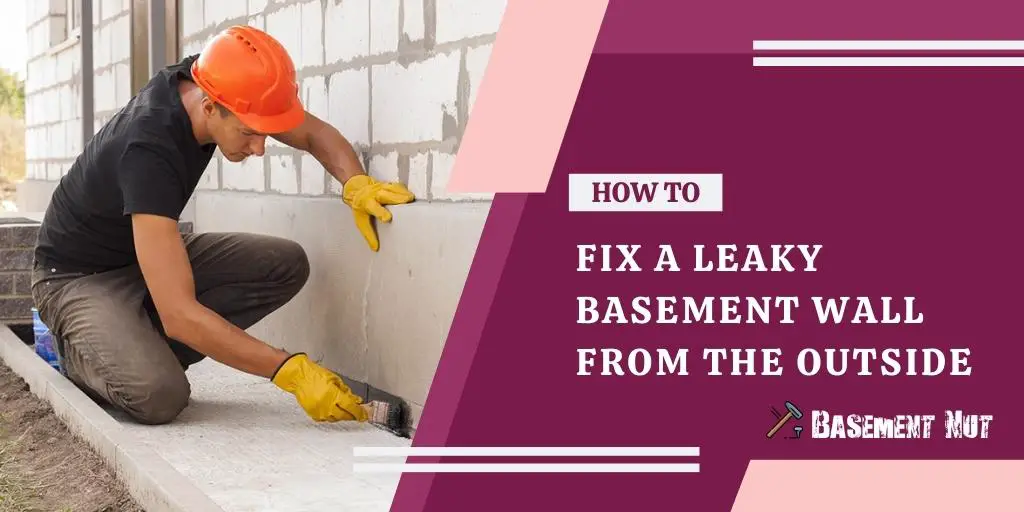
What Is a Leaky Basement Wall?
A basement wall may start to leak for a variety of reasons. One common cause is cracks or gaps in the foundation. When water seeps into these cracks, it can cause the soil around the foundation erodes, eventually leading to cracking and leaks in the basement wall.
Another common cause of leaks is poor drainage around the foundation. If rainwater or melting snow is not properly directed away from the foundation, it can seep into the ground and cause hydrostatic pressure to build up against the basement wall.
This pressure can force water through small openings or cracks, resulting in a leaky basement wall. Fortunately, there are several ways to repair a leaky basement wall.
For example, cracks can be filled with hydraulic cement, and proper drainage systems can be installed to help redirect water away from the foundation. Taking these corrective measures can help keep your basement dry and prevent further damage to your home.
Why Should You Fix a Leaky Basement Wall from The Outside?
A leaky basement wall can spell trouble for any homeowner. Not only can it lead to costly repairs, but it can also create a breeding ground for mold and mildew.
Fortunately, there are several steps that homeowners can take to prevent basement leaks. One of the most effective ways to fix a leaky basement wall is from the outside.
By sealing cracks and gaps from the outside, you can help to prevent water from seeping into your basement. In addition, exterior waterproofing can help to reduce hydrostatic pressure, which is one of the leading causes of basement leaks. As a result, fixing a leaky basement wall from the outside is often the best way to protect your home from water damage.
You Can Also Check It Out to Build a Multi Level Basement
7 Steps to Follow on How to Fix a Leaky Basement Wall from The Outside
1. Assess the Damage
The first step in fixing a leaky basement wall is to assess the damage. This will help you determine the best course of action to take. For example, if the leak is small and only occurs during heavy rains, you may be able to fix it yourself. However, you will need to hire a professional if the leak is large or persistent.
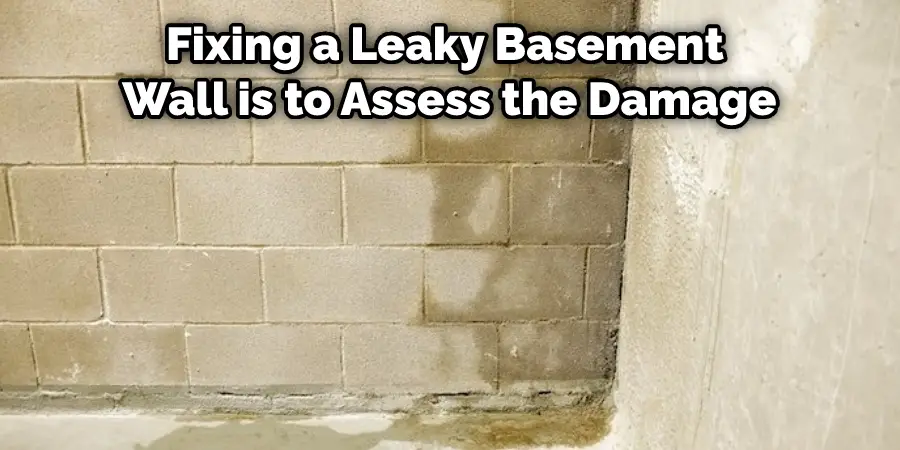
2. Identify the Source of the Leak
Once you have assessed the damage, you will need to identify the source of the leak. This can be tricky, as leaks can often originate from higher up in the house and travel down through the walls. If you cannot find the source of the leak, you may need to hire a professional to help you.
3. Repair any Cracks or Holes
Once you have found the source of the leak, you will need to repair any cracks or holes in the wall. This can be done with various materials, such as hydraulic cement, epoxy, or polyurethane foam.
If you are unsure of how to repair the cracks or holes properly, you may want to hire a professional to do the job for you.
4. Apply a Waterproofing Membrane
After repairing any cracks or holes, you will need to apply a waterproofing membrane to the outside of the wall. This will help to prevent water from seeping into the wall in the future.
There are a variety of waterproofing membranes available on the market, so be sure to choose one that is right for your needs.
5. Install Drainage Tile
Another way to help prevent water from seeping into your basement is to install drainage tile around the perimeter of your foundation. This will allow water to drain away from your house and into a drainage system instead of seeping into your basement walls.
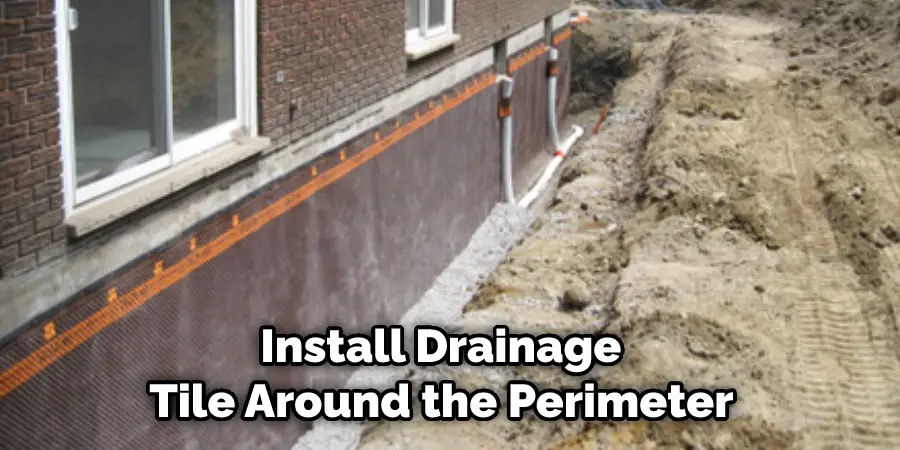
6. Extend Your Gutters
If your gutters are not properly draining water away from your house, they could contribute to your basement leaks. To help prevent this, you will need to extend your gutters so that they drain water at least 6 feet away from your foundation.
7. Call a Professional
If you have tried all of these steps and are still having problems with leaks in your basement, it may be time to call a professional. A professional can identify any underlying problems and provide solutions specific to your situation.
When dealing with leaks in your basement, hiring a professional is always the best course of action. You’ve now learned how to fix a leaky basement wall from the outside. Be sure to follow these steps carefully to ensure that your repairs are successful.
3 Common Causes of Basement Leaks
Basement leaks are a common problem in homes with basements. But what causes them? Several factors can contribute to basement leaks, including poor drainage, cracks in the foundation, and faulty gutters. Let’s take a closer look at each of these:
Poor drainage is often the culprit when it comes to basement leaks. If water is not directed away from your home, it can seep into the ground and eventually make its way into your basement. This is why proper grading and drainage around your home are so important.
Cracks in your foundation can also allow water to enter your basement. These cracks can be caused by the settling of the home or by poor construction. Foundation repair is usually necessary to fix this problem.
Faulty gutters can also cause basement leaks. If your gutters are not properly directing water away from your home, they can allow water to seep into the ground and eventually make its way into your basement. This is why keeping your gutters clean, and debris-free is so important.
These are just a few of the most common causes of basement leaks. If you suspect that you have a leak, it’s important to have it checked out as soon as possible to avoid further damage to your home.
You Can Check It Out to Find a Basement Leak
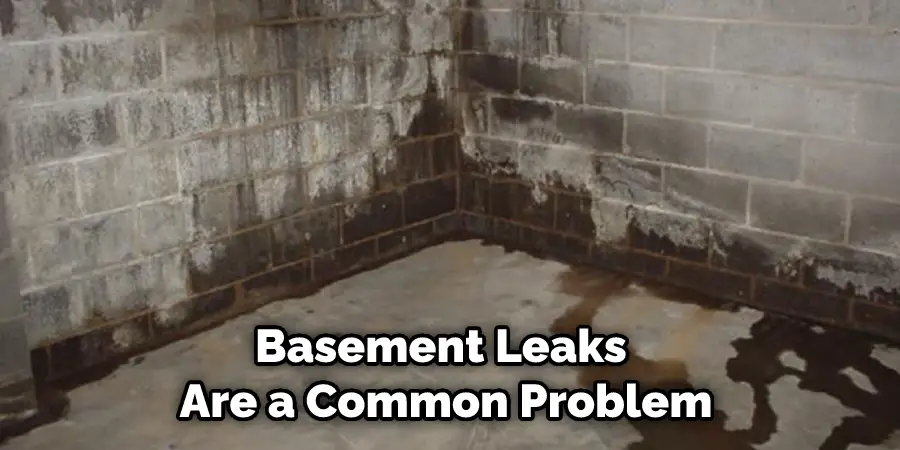
How to Find the Source of A Leaky Basement Wall?
A leaky basement wall can be a frustrating problem, especially if the source of the leak is not immediately apparent. However, a few simple steps can be taken to locate the source of the leak.
First, check for any obvious signs of water damage, such as stains or pooled water. If there is no visible evidence of a leak, try running a hose along the base of the wall. If the hose test does not reveal any leaks, the problem is likely with the gutters or downspouts.
Inspect the gutters and downspouts for clogs or leaks to check for gutter problems. If they appear to be in good condition, the problem may lie with the roof.
For example, inspecting the roof for damaged or missing shingles is often the best way to determine the source of a leaky basement wall.
You Can Chack It Out How to Fix a Basement Wall that Is Caving In
What Kind of Sealant Should I Use to Fix My Leaky Basement Wall?
Any homeowner who has dealt with a leaking basement knows the feeling of frustration and helplessness. But don’t despair; there are things you can do to fix the problem.
The first step is to identify the source of the leak. Next, you’ll need to apply a sealant if it’s coming from cracks in the walls or floors. But what kind of sealant should you use?
There are two main types of sealant: hydraulic and epoxy. Hydraulic sealants are made of water-resistant materials like latex or silicone, and they work by filling in the cracks and gaps in your basement walls.
Epoxy sealants are made of stronger chemicals, and they work by creating a barrier between the water and the concrete. Both types of sealant have their advantages and disadvantages, so it’s important to choose the one that’s best for your particular situation.
If you’re unsure which type of sealant to use, or if you need help with any other aspect of fixing your leaking basement, don’t hesitate to call a professional. With their help, you can return your basement to its dry, comfortable state in no time.
You Can Chack It Out How to Clean Concrete Basement Floor After a Flood
Is It Cheaper to Fix a Leaky Basement Wall from The Inside or Outside?
When it comes to fixing a leaky basement wall, there are two main options: working from the inside or the outside. Each approach has its own advantages and disadvantages.
Working from the inside is generally less disruptive since it doesn’t require excavating the foundation. It’s also typically cheaper since you won’t need to repair any damage to the exterior of your home.
However, working from the inside can be more difficult since you’ll need to access the leaky area through a small opening. In addition, it may not be possible to fully repair the problem from the inside if the leak is located near the bottom of the wall.
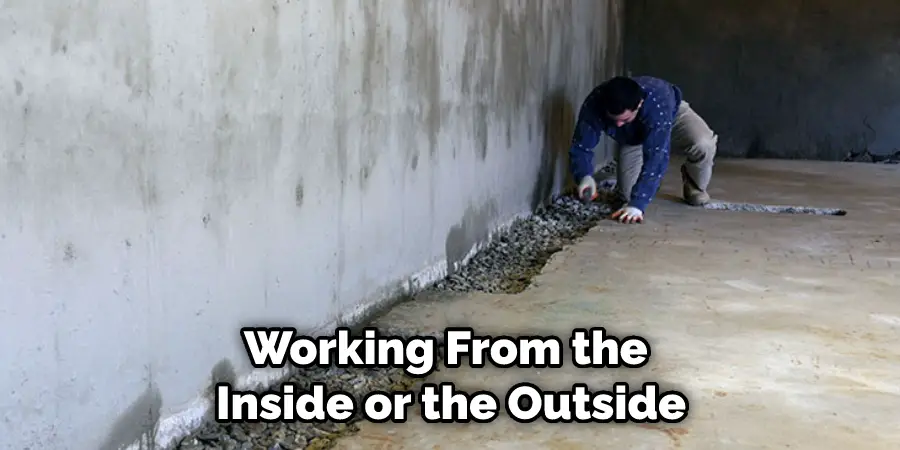
Working from the outside is generally more disruptive since it requires excavating around the perimeter of your home. It’s also typically more expensive since you’ll need to repair any damage to the exterior of your home.
However, working from the outside is generally easier since you’ll have full access to the leaky area and won’t need to make a small opening in your basement wall.
In addition, working from the outside is often more effective since it allows you to address problems at their source. As a result, when deciding whether to fix a leaky basement wall from the inside or outside, it’s important to consider all of these factors.
Conclusion
Water in your basement can be a serious issue, but if you take care of it immediately, you can prevent further damage.
By following these steps, you’ll be able to fix a leaky basement wall from the outside and keep your basement dry all year round. Thanks for reading our post about how to fix a leaky basement wall from the outside.
You Can Chack It Out Finish a Basement Bathroom with Rough-In Plumbing
